Effective Implementation of Safety Management System at Changi Airport
VerifiedAdded on 2022/08/17
|5
|1011
|15
Report
AI Summary
This report provides a comprehensive analysis of the Safety Management System (SMS) implemented at Changi Airport. It begins by highlighting the importance of SMS in the aviation industry and its adoption at Changi Airport in 2009. The report details the purpose and addressees of the SMS, emphasizing its role in coordinating security efforts, managing emergency plans, and addressing various safety-related situations, including dangerous goods, bomb warnings, and biological threats. Furthermore, the report outlines the key elements of Changi's SMS, such as the integration of a safety plan into the business plan, established processes, policies, and procedures, and comprehensive training programs. The report also examines the SMS monitoring process, which includes exposure assessment, workplace safety analysis, employee suggestions, and safety inspections. Finally, it discusses the incident reporting system, including the voluntary online reporting system and hotline numbers. The report concludes by emphasizing the effective implementation of SMS at Changi Airport and its contribution to maintaining high safety standards.
1 out of 5
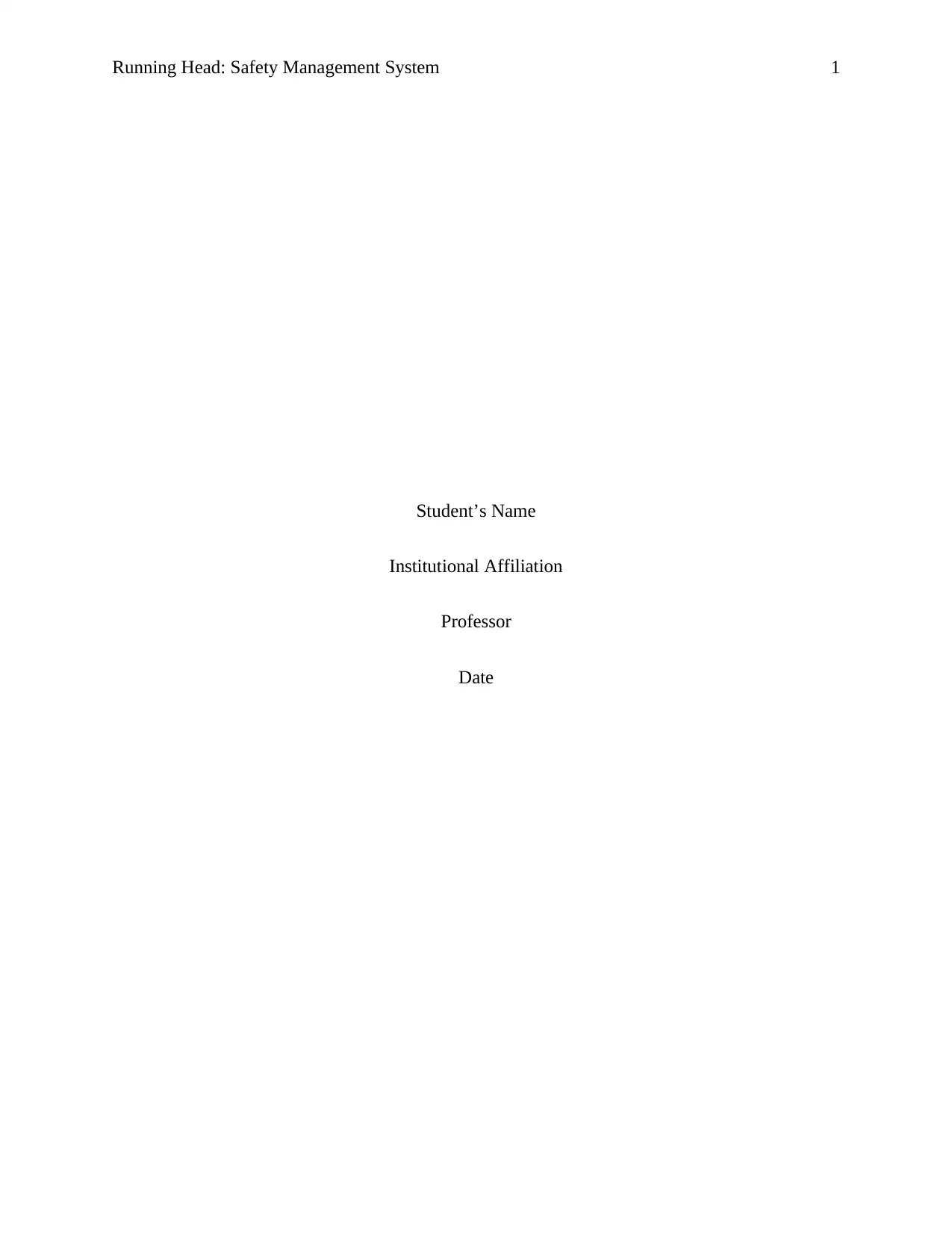
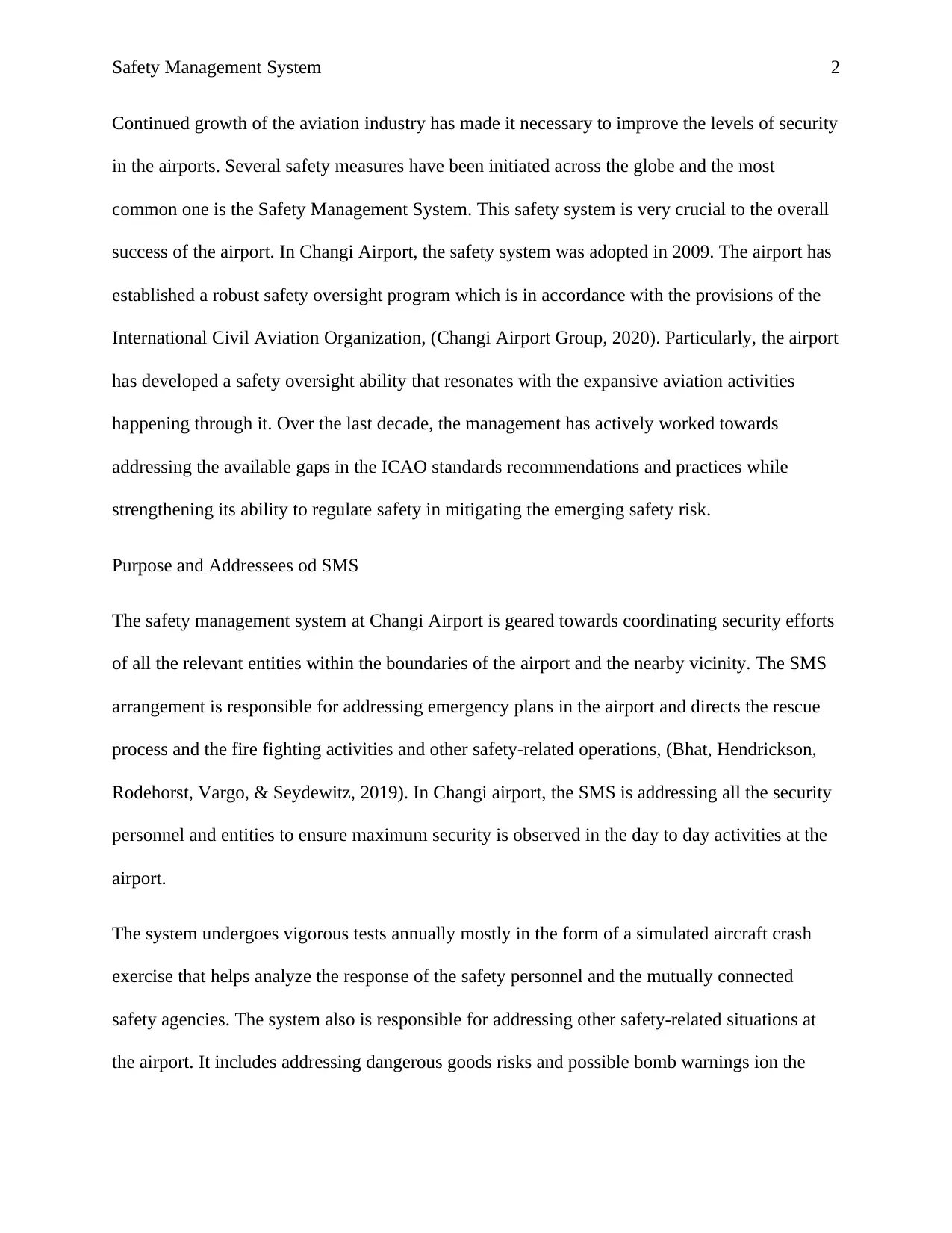
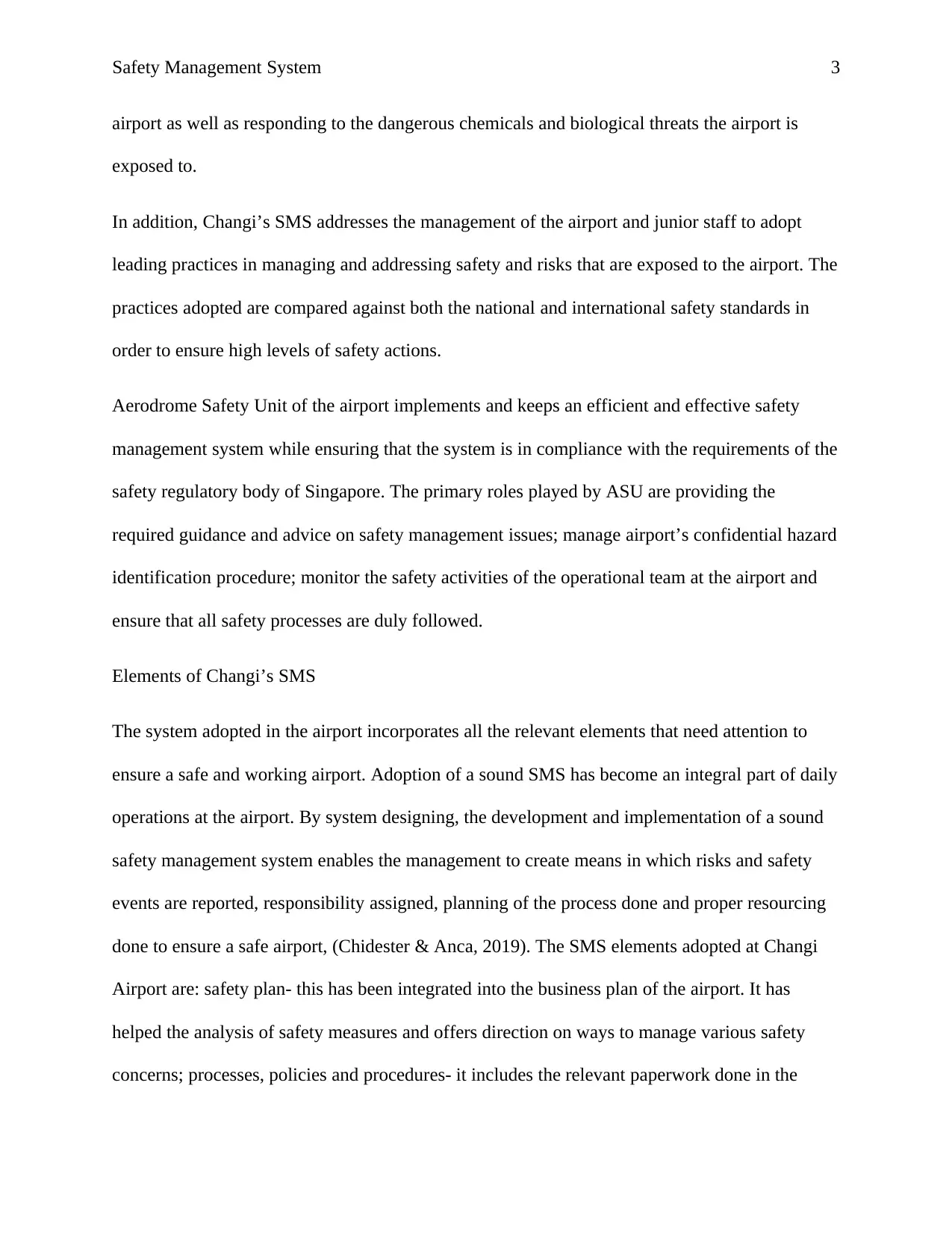

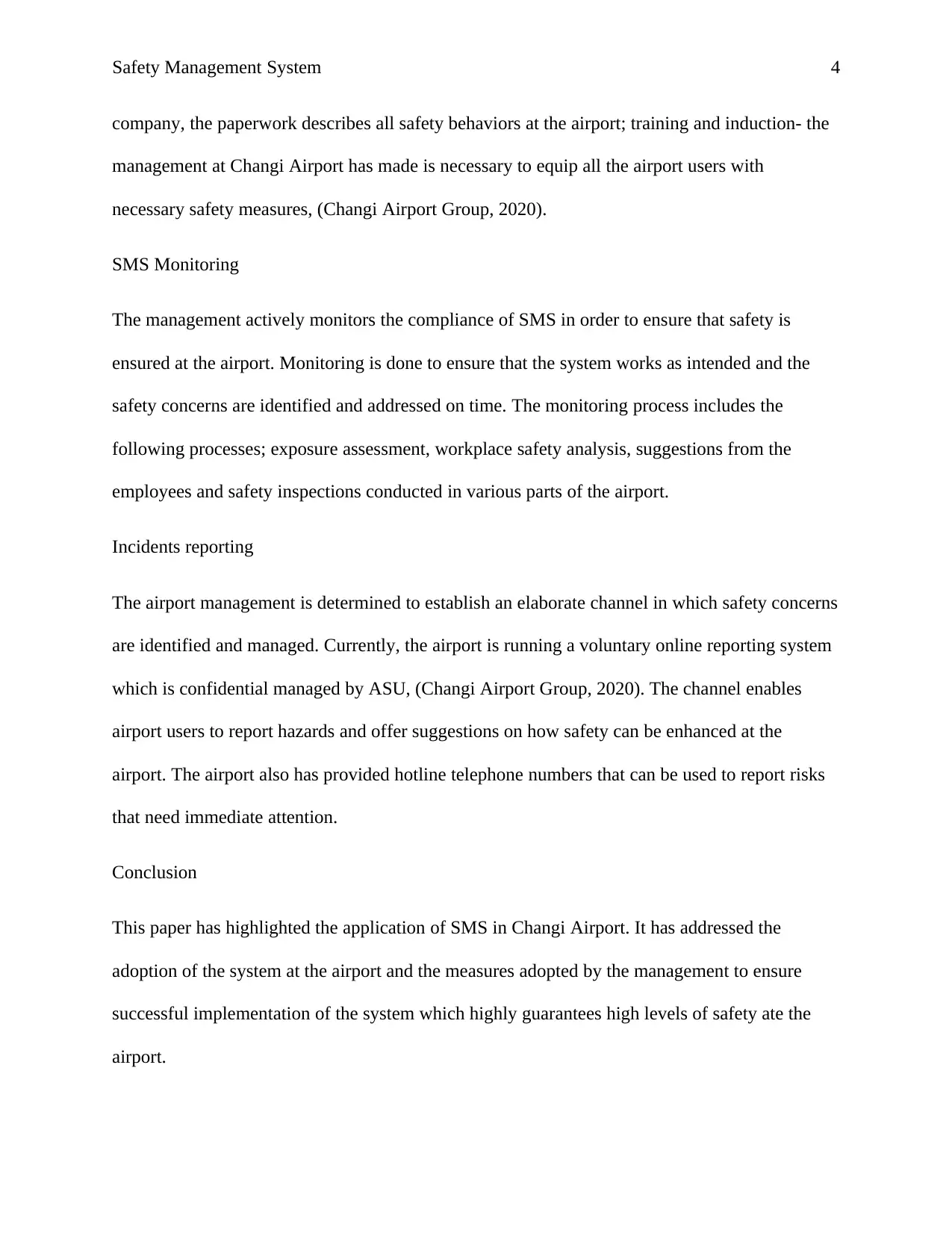
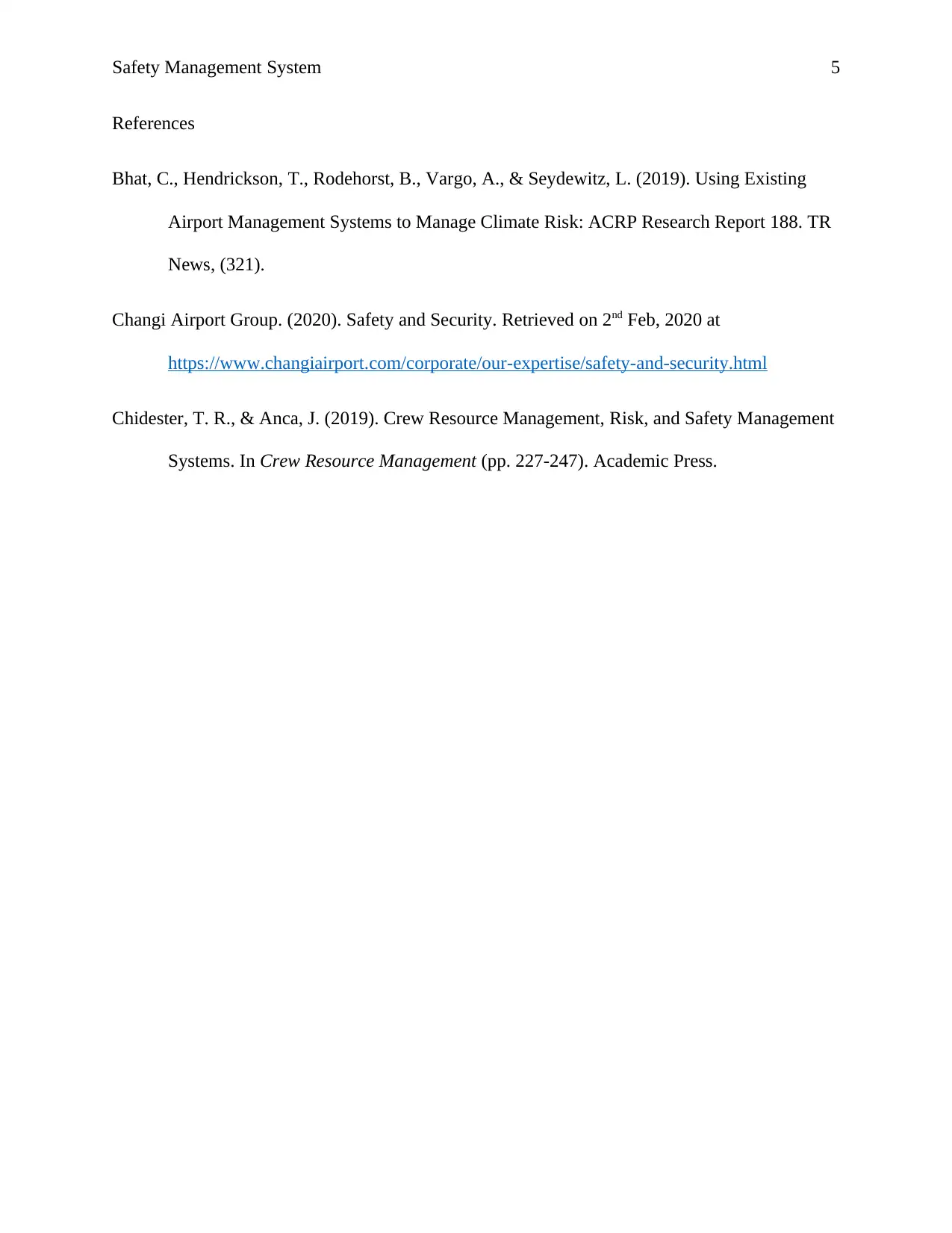






![[object Object]](/_next/static/media/star-bottom.7253800d.svg)